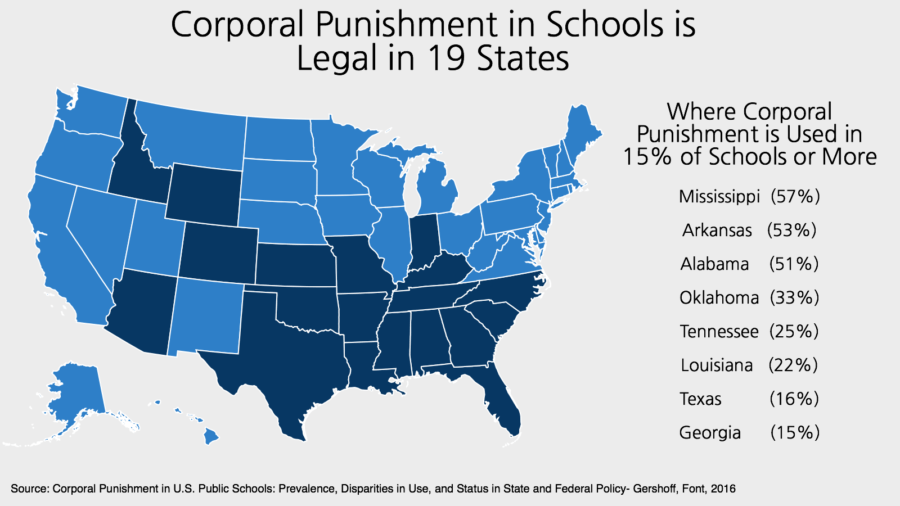Teacher’s Summary: In this education essay, a student explores the outdated practice of corporal punishment and its negative impact on students. The essay discusses personal experiences, psychological insights, and real-life examples to argue against physical punishment in schools. It highlights effective alternatives such as clear communication, involving students in rule-making, and positive reinforcement. Through thoughtful reflection and research, the student demonstrates how these methods create a safer, more respectful, and conducive learning environment. This persuasive piece encourages educators and parents to adopt more humane and effective disciplinary practices.
Why Corporal Punishment Fails: A Student’s View on Corporal Punishment

Introduction
When my History teacher mentioned that corporal punishment used to be common in schools, I was shocked. The idea of teachers hitting students seemed like something out of a horror movie. As I dug deeper for my class project, I realized this wasn’t just a thing of the past – some places still allow it! This discovery led me on a journey to understand why corporal punishment is wrong and what better alternatives exist.
The Problem with Pain
Imagine getting a math problem wrong and being hit with a ruler. Sounds crazy, right? But that’s what corporal punishment is – inflicting physical pain as a form of discipline. As I researched, I kept thinking, “How is hurting someone supposed to help them learn?”
I remember when I was younger, and my little brother broke a vase. Our parents sat us down and explained why we shouldn’t play ball in the house. That conversation stuck with me way more than any punishment could have. It made me realize that communication is key.
Setting the Ground Rules
In my experience, the best teachers are those who set clear expectations from day one. My English teacher, Ms. Johnson, is a perfect example. She’s strict but fair, and we all know exactly what she expects from us. She’s never raised a hand or even her voice, but her class is always orderly.
I think if more teachers followed Ms. Johnson’s example, there’d be no need for harsh punishments. It’s about creating an environment where everyone knows the rules and understands why they’re important.
Getting Students Involved
One of the coolest things I’ve seen is when teachers let us help create class rules. In my Science class, we all contributed to a list of “Lab Laws.” Because we came up with them ourselves, everyone takes them seriously. It’s like we have ownership of the rules, so we’re more likely to follow them.
This approach makes so much more sense than corporal punishment. Instead of fearing consequences, we’re motivated to do the right thing because we understand why it matters.
The Power of Psychology
I’ve always been fascinated by psychology, and researching this topic showed me how it can be used in the classroom. For example, my History teacher uses a “class leader” system where different students get to help manage the class each week. I’ve noticed that even the usual troublemakers behave better when it’s their turn to lead.
Another technique I’ve seen work is positive reinforcement. In my Math class, the teacher gives out “star student” stickers for good behavior or excellent work. It might sound childish, but even as teenagers, we all secretly love getting that recognition. It makes us want to do better.
Addressing the Other Side
I know some people argue that corporal punishment “gets the job done” or that sparing the rod spoils the child. But from everything I’ve learned, these ideas are outdated and harmful. Sure, hitting a kid might make them stop a behavior in the short term, but at what cost?
I think about my friend Alex, whose parents believe in physical punishment. Alex is always anxious and has trouble trusting adults. Is that really the outcome we want from discipline?
Conclusion: A Better Way Forward
After all this research, I’m more convinced than ever that corporal punishment has no place in schools – or anywhere else. There are so many better ways to guide and teach students. Clear communication, involving students in rule-making, and using positive psychology are just a few alternatives that actually help us learn and grow.
As students, we come to school to learn, not to live in fear. I hope that by sharing what I’ve learned, I can help convince others that there’s a better way to discipline and educate. After all, shouldn’t school be a place where we feel safe, respected, and motivated to be our best selves?
Work Cited:
1. Gershoff, E. T. (2010). More Harm Than Good: A Summary of Scientific Research on the Intended and Unintended Effects of Corporal Punishment on Children. Law and Contemporary Problems, 73(2), 31-56.
2. Straus, M. A. (2001). Beating the Devil Out of Them: Corporal Punishment in American Families and Its Effects on Children. Transaction Publishers.
3. Hyman, I. A. (1990). Reading, Writing, and the Hickory Stick: The Appalling Story of Physical and Psychological Abuse in American Schools. Lexington Books.
4. Kazdin, A. E. (2008). Parent Management Training: Treatment for Oppositional, Aggressive, and Antisocial Behavior in Children and Adolescents. Oxford University Press.
5.Cambridge University Press. (2019). Alternatives to Corporal Punishment.
